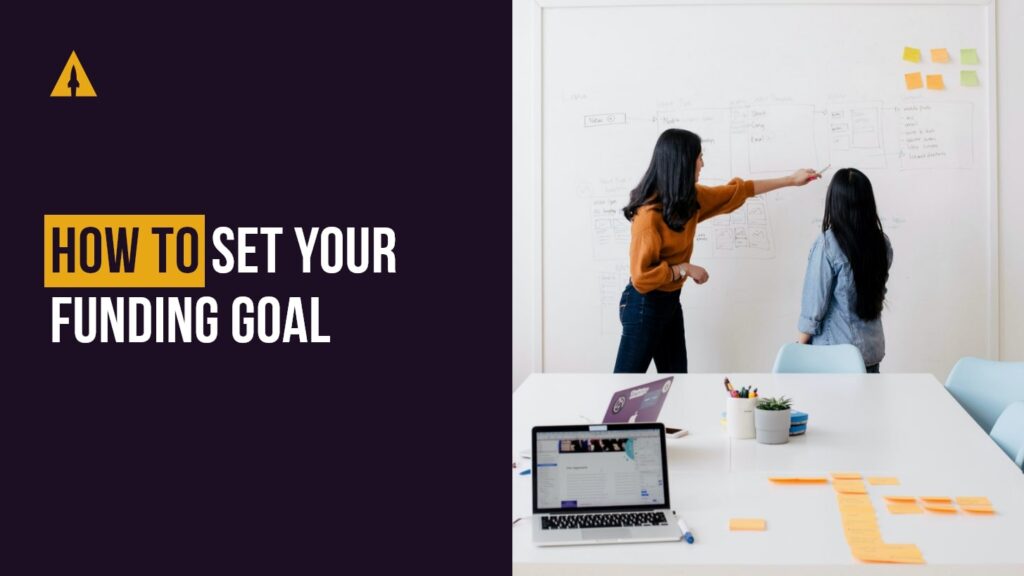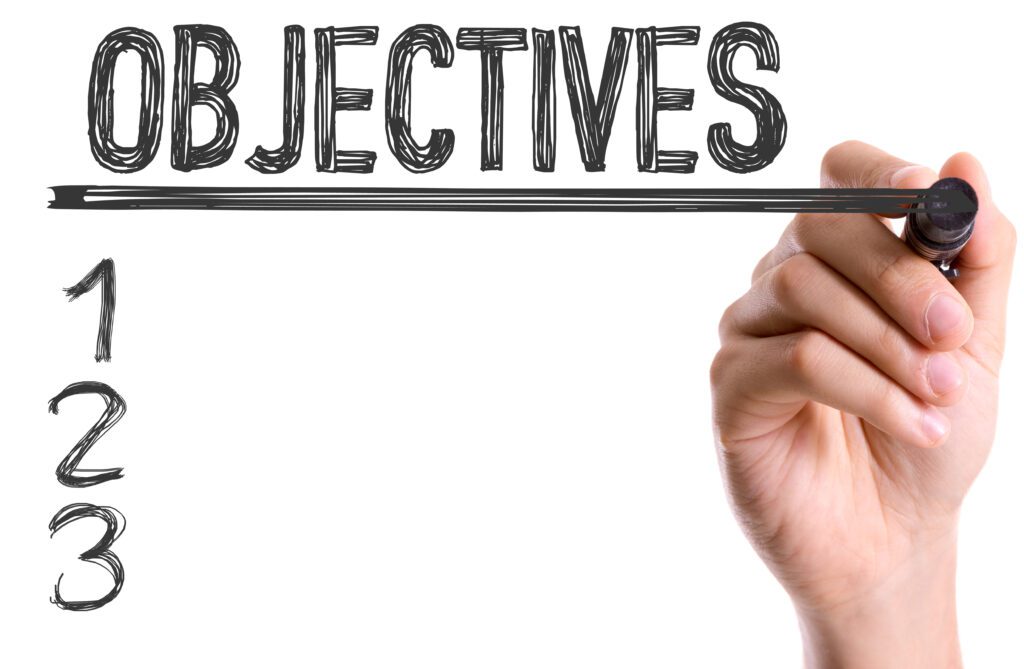
At first glance, setting your funding goal for your crowdfunding campaign appears to be a straightforward task. Shouldn’t it just be the amount you need to create your product? Well, not exactly.
While the answer isn’t always black and white, the one thing you don’t want to do is just guess. If you set your goal too low, you might not end up raising enough money to cover your expenses. If you set your goal too high, you may not come close to reaching it at all.
Having a funding goal that you know will cover all of your expenses and won’t be out of reach is key to your campaign’s success, so it’s crucial to understand how to determine it. In order to do this, you’ll need to understand two things: your campaign objective and how to calculate your funding goal using key data.
First, we’ll explore how to identify your campaign objective.
Contents
Campaign Objective

What is this and why does it matter for your funding goal? Basically, your campaign objective is how you define success for your product launch. Whether that’s a modest earning to finance your product or setting new records for amount raised on Kickstarter or Indiegogo, your funding goal will reflect that objective to backers.
To help identify your objective, answer these questions:
- What are your fixed costs to create your product? (cost of minimum order quantity, molds, tooling, etc.)
- If you lost money on the crowdfunding campaign, would you still go through with it?
- If yes, how much are you willing to lose?
- What’s more important to you: showing a high amount raised on your campaign OR getting funds to create your product?
The answers that you come up with will ultimately lead you to one of two strategies. Which statement do you identify with more?
- Funding Strategy—If I don’t hit my funding goal on Kickstarter or Indiegogo, then I won’t create my product.
- Marketing Strategy—I already have the funds to create my product or have other means to get the funds. Kickstarter or Indiegogo is my way of getting mass exposure for my product.
These two paths are not mutually exclusive. Meaning, crowdfunding can both be a funding strategy and a marketing strategy, but it’s important to know which one is really driving your decision to crowdfund.
Calculating funding goal for a Funding Strategy
If you identify more with crowdfunding being a funding strategy, then it is pretty black and white. You should choose a funding goal which is the minimum amount required to create your product. Let’s break down some key calculations in determining your funding goal for this strategy.
Step 1: Calculate your fixed costs
These are things like molds & tooling, package design, and travel & trade shows. They’re costs that you will have to pay once, rather than things associated with the production of each unit. For our example, we’ll say our fixed costs are $13,500.
Step 2: Calculate your variable costs
These are the components of your product that will have to be paid for each unit that you produce. Think about things like the battery, casing, buttons, gears, packaging, and assembly for each unit (or whatever different components your particular product will need). Break this down as much as you can so you understand how much each piece is going to cost. For our example, we’ll say our variable costs are $10.40 per unit.
Step 3: Figure out your average order value
Most likely, you’ll plan to offer different prices on your product at different points during the campaign (think about Early Bird specials and VIP pricing, for instance). Your average order value will generally be about 1.25x your most discounted price. For our example, we’ll say our average order value is $100.
Step 4: Calculate your break-even count and funding amount
Subtract the number you got in step 2 from the number you got in step 3 to get your profit per unit: $100 – $10.40 = $89.60
Now divide the number you got in step 1 by your profit per unit to get your break-even count: $13,500 / $89.60 = 150.669
This number represents the units you need to sell to break even. In this case, we will need to sell 151 units. With this information, we can now calculate our break-even price by multiplying our break-even count by our price per unit: 151 units x $100 = $15,100
We now know that our funding goal for our sample project here should be $15,100 if we want to break even on the campaign. If we want to make a profit, we can make that goal higher. We can also adjust the price per unit if it makes sense with the product, or seek to lower fixed and variable costs by working with other vendors if possible.
Calculating funding goal for a Marketing Strategy

If you identify more with crowdfunding being a marketing strategy, then you should choose a funding goal you believe you can reach within 48 hours.
Getting funded within a couple days of your campaign opening has some unique advantages:
- Increased buyer confidence: Many backers hold off on backing projects that aren’t funded. The Moment 2.0 creators had a goal of $500K and said “between $300–500K we heard from a lot of potential backers who were going to wait until we crossed the funding line. Pick too low and you won’t have enough money to deliver. Choose too high and you risk losing momentum and worsening conversion rates.”
- Get press coverage more easily: Crowdfunding campaigns already have a bad rap in the press because of the amount of high-profile projects that failed. As a result, getting top-tier media to cover your project is becoming more difficult—if you aren’t funded yet, you’ll have an even greater challenge getting coverage.
- Get traffic from Kickstarter’s popularity rankings: Kickstarter has two primary sorting algorithms: Magic and Popularity. Magic is its default ranking which relies less on sheer number of backers/day and funding amount. Popularity is a highly trafficked ranking algorithm that definitely takes into account your funding amount. If you reach your funding goal quickly and are extremely funded, you will be high up in the rankings, giving you access to free traffic.
To know if your funding goal is achievable within 48 hours, you also need to understand how much traffic you will be able to send to the campaign during that time. The top sources of traffic will be your email list, paid advertising, PR, and the crowdfunding platforms.
A pre-launch email list is typically responsible for most of the sales during the first 48 hours of a campaign. It is the marketing channel we spend the most time building before we launch the campaign.
Here’s how you can use your email list to set your funding goal using very conservative numbers. For example, let’s say a campaign has…
- An email list of 10,000 subscribers
- We estimate that 2% of those subscribers will back the campaign
- That equals 200 backers within the first 48 hours
- Those 200 backers will spend $150 on average
- Which equals $30,000 in revenue within the first 48 hours
With these numbers, we’d set the goal at $30,000 as we would expect to be able to hit that funding goal just from the email list in the opening days of the campaign.
Bonus Advice – Never set your funding goal TOO low
Don’t let all this talk about strategically setting your funding goal low cloud your judgment. In the end, you have to set a funding goal that will allow you to create your product. It might seem kind of silly to have to say that, but I’ve seen creators take a huge risk by setting the goal lower than what they actually needed. Moreover, there was no funding backup plan. As you can imagine, things didn’t end well for them.
And again, the important thing here is that you should never guess on these numbers, or set a funding goal based on a gut feeling. Determining your funding goal isn’t about what you really hope to raise, it’s about making sure you set an amount that will cover your costs and perhaps make some profit on top of that.
Setting your funding goal is just one part of the process. If you’re planning to launch your product on crowdfunding, we’re here to offer our guidance!




